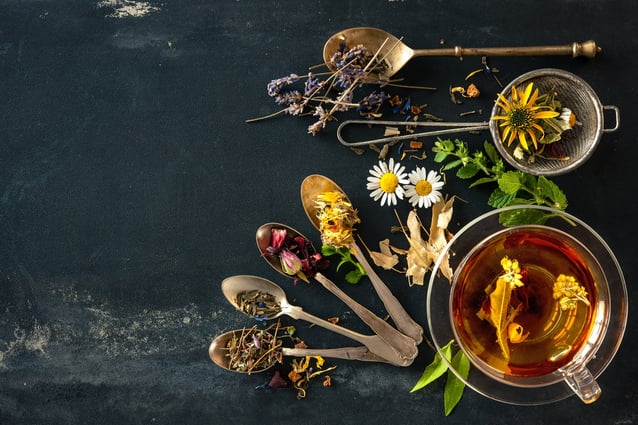When you think of the minerals your body needs, your thoughts probably turn to calcium or iron pills. Of course, most of our daily minerals come from food, and at that, many from plants. Many of the plants we think of as herbal remedies are, in fact, mineral-rich foods.
Since the minerals in these herbs are in the form of organic compounds, they are usually easier for your body to assimilate than mineral supplements. And nettle, alfalfa and horsetail are three of the herbal mineral superstars.
Nettles for Minerals
Nettles are widely spread over the world and consist of about 500 species, mainly tropical, though several, occur widely in temperate climates. Imported from Europe, but now naturalized here, the common stinging nettles, the perennial Urtica (from “to burn”) dioica, which can grow as high as seven feet, and the smaller, annual Urtica urens, are fixtures in Western herbal medicine.
First and foremost, nettle is a traditional food. The leaves are consumed as a spinach-like vegetable throughout Europe. Nettle leaf is remarkably nutritious. Cooking or drying deactivates the sting. As a healing food, nettle is a general tonic, a nutritive, building herb. European herbal expert David Hoffmann calls it “one of the most widely applicable plants we have,” and says that they strengthen and support the whole body. Hoffmann once personally told me that his motto is “if in doubt, use nettles.” At its peak ripeness, nettle contains up to 25% dry weight protein, which is top-notch for a leafy green vegetable.
Is kale your go-to leafy green because of its high calcium content? You'll go nuts for stinging nettle, which humble-brags about its four times the calcium at 428 mg of calcium per cup. Naturally high in iron, with 1.46 milligrams per 1-cup serving of cooked leaves (2 cups of fresh leaves or 2 tablespoons of crushed, dried leaves, which makes one cup of nettle tea), nettle is a champion for blood health.
Add that to substantial amounts of zinc, magnesium, copper, selenium, potassium, manganese and vitamins A and C, and spinach has found a rival.
Speaking of spinach, cooked nettle tastes similar to Popeye’s lunch mixed with cucumber. Soaking or cooking young leaves removes the sting from the plant. Use nettle as spinach, basil or parsley n polenta, pesto, and purée. Nettle soup is a common use of the plant, particularly in Northern and Eastern Europe.
Horse Feed for Minerals
When we think of alfalfa, after horse food, we probably think sprouts. Turns out, though, that alfalfa is a pretty decent food. A legume, related to clover, beans and licorice, its young leaves can be used in salads or as steamed greens. Alfalfa is high in calcium and other minerals, protein, vitamin B complex, C, D, E and K. With its mild, grassy taste, dried alfalfa goes down well as a tea, or you can consume the dried powder in food or capsules.
Ancient Minerals
Horsetail (Equisetum spp.), an ancient plant, grows in profusion all over the globe. Herbalists have pointed to its bone-healing properties for centuries.
Studies indicate that silicon plays a role in bone development, may enhance bone mineralization, and may promote calcium deposition in bone. Horsetail, which contains silicon, is a traditional joint medicine. According to preliminary evidence, it may be an effective natural treatment for osteoporosis. In an Italian randomized trial, 122 women took placebo, no treatment, horsetail dry extract or a horsetail-calcium combination. After 40, 80, and 365 days, both the horsetail and calcium groups had a statistically significant improvement in bone density.
Building on the traditional knowledge of horsetail, recent studies have confirmed that this mineral-rich herb does in fact promote bone growth, while simultaneously suppressing bone mineral loss.
In an era where devitalized foods are the norm in the American diet, perhaps it’s time to turn to some herbal foods that really pack a mineral punch. As side dishes, salads or teas, we can turn back the clock and enjoy some nourishing herbal foods that once graced the tables of our ancestors.


